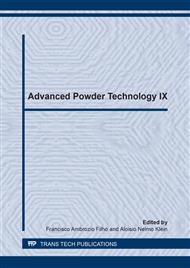p.462
p.467
p.472
p.477
p.483
p.491
p.496
p.501
p.507
Influence of High Temperature Sintering on Impact Properties of Low Alloyed Steels
Abstract:
High temperature sintering, i.e. at temperatures above 1150°C is a well-known concept in industry. For example in the metal injection molding (MIM) process sintering temperatures employed are higher than 1250°C for ferrous alloys [1]. The advantages of this technology respect to conventional sintering are many: an increase in the homogeneity and in density, a better pores morphology, the elimination of some reducible oxides. All these lead to better mechanical properties and corrosion resistance which means better performance [2, 3, 4, 5].
Info:
Periodical:
Pages:
483-488
Citation:
Online since:
December 2014
Authors:
Price:
Сopyright:
© 2014 Trans Tech Publications Ltd. All Rights Reserved
Share:
Citation:


